Sea transport is entering a decarbonization phase
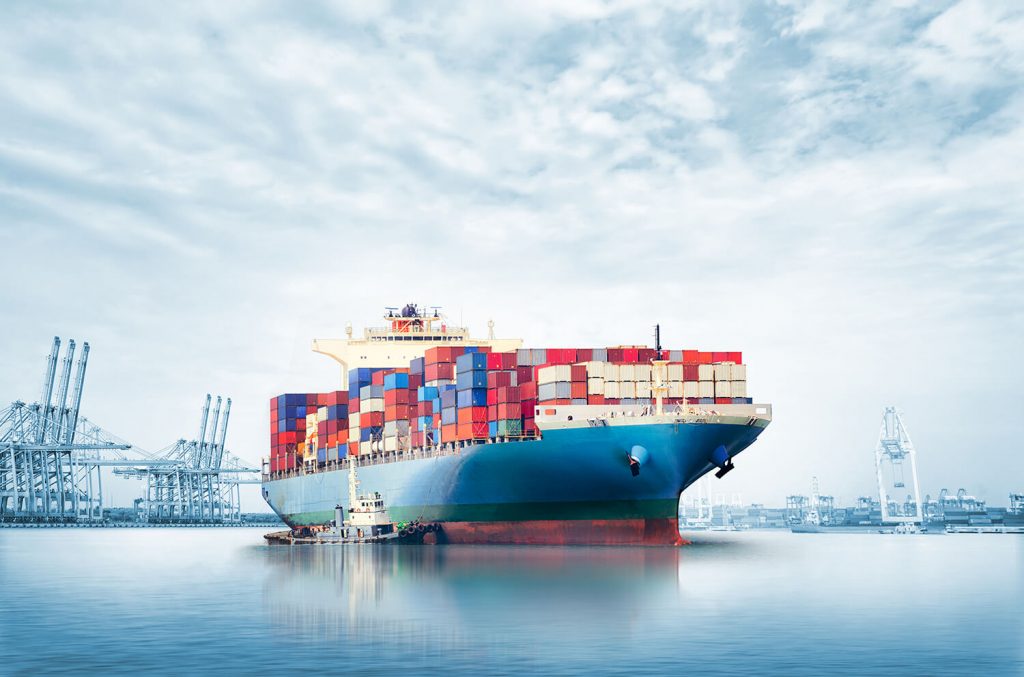 February 19 2021
February 19 2021
The aviation sector has already started its green shift with the adoption of a sustainable alternative fuel by some of its airlines. The electrification of vehicle fleets is the hot topic of the day as the trucking industry is in full revolution. Now, it’s the International Maritime Organization (IMO)’s turn to unveil its objectives to ensure the sustainable development of its industry, which aims to reduce global emissions by 50% compared to 2008 data by 2050, in addition of commissioning zero-carbon commercial vessels as soon as 2030.
Sea transport remains the least polluting mode when compared to others. Indeed, with one litre of fuel for one ton of goods transported, a ship travels 358 km, a train 225 km, and a truck 41 km.1 This represents a considerable advantage for consumer goods transportation over long distances. Despite its high energy efficiency, the maritime industry is nevertheless responsible for 3% of CO2 emissions, 15% of sulfur oxide (SOx) emissions and 17% of nitrogen oxide emissions on a global scale, all factors that contribute to greenhouse gas (GHG) emissions.2
Last year, the organization created the IMO 2020 program, which aimed to limit the sulfur content in the fuel oil used on ships to 0.50% m/m. Since then, this measure has reduced SOx emissions from ships by 77%, an annual reduction of 8.6 million metric tonnes.3 In order to reduce its ecological footprint, the IMO intends to continue its drive towards carbon neutrality and to achieve this, several possible solutions are being considered.
Sustainable Fuel
Several environmentally friendly fuels are gradually establishing themselves as new standards in the sea transport industry. Among them are light gases (LNG, bio-LNG, synthetic natural gas, renewable natural gas, and hydrogen), alcohols (methanol, ethanol, and ammonia) and liquid or gaseous bio-based synthetic biofuels (bio diesel, bio H2, bio-LNG, etc.) Their main advantage: they can all be used as fuel for power generation and propulsion, without compromising the speed of trade.
In the group of light gases, hydrogen is a particularly promising technology since its use does not generate any release of sulfur or nitrogen particles into the air. For their part, methanol and ammonia require some modification of ships to be used and more frequent bunkering. They will therefore be recommended for shorter distance journeys. For biofuels, the challenge is the same as the one faced by the airline industry: the quantities available are limited and given the high demand for them and their popularity right now, their price is very high. To learn more about this subject, read out our past article: “Investing now in an alternative aviation fuel for a sustainable industry.”
Wind Power
Wind, an inexhaustible source of energy, is at the very origin of the great history of sea transport and international trade. What if a return to basics is necessary? Numerous projects are currently under consideration for the development of a hybrid propulsion mode, which combines wind power and engine power to increase efficiency while reducing fuel consumption. Wind-powered vessels could reduce fuel consumption and GHG emissions by 50% on average, according to the International Windship Association. Some models could even be powered 100% by wind power. As part of its Clean Maritime Plan for 2019, the UK government has carried out a study that found that the wind-powered system market could reach a value of $3.5 billion globally by 2050.4 Of course, the expected results depend on the type of technology used, the number of sails installed on vessels, and on the speed and the direction of the wind as well.
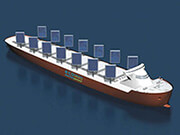
To be precise, we are not talking about the large ancient linen sails hoisted to the top of masts here, but rather about a new generation of sails. Whether rigid or flexible, sails can be tilted according to the direction of the wind as they can also be stowed away when not in use, during loading or unloading for instance.
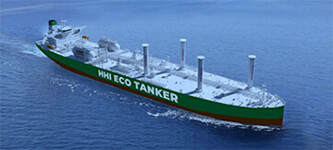
Another technique used to generate wind power is installing rotating cylinders or vertical rotors. Erected on the decks of ships like large tubes, they use the aerodynamic phenomenon based on the principle of propulsion by the rotation of air. Unlike sails, the strength of the wind is not a determining factor here since these tubes are powered by their own small internal motors.
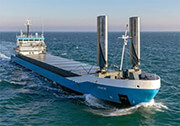
Turbo Sails are the result of a joint concept between sails and cylinders, without their rotary power. However, these have an internal fan that draws air through a boundary layer of air, which changes the pressure and produces forward movement.
Focus on an Aerodynamic Shape of the Ship’s Hull
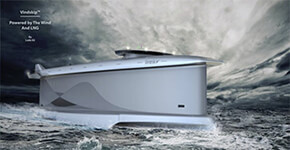
Why not transform the shape of a ship’s hull into a giant sail? This technique is inspired by the void fill dunnage, by creating a vacuum on the leeward side of the ship in order to propel it by generating traction, much like an airplane wing that uses the low pressure on the top face of the ship wing to generate lift. This type of vessel is still being designed, but it promises to use software that traces the best possible ocean path based on weather conditions and wind prediction for optimal results.
Storing Energy Using Wind Turbines

Although this system is not yet in use by commercial fleets, the integration of this new technology would provide more flexibility given the ability to store energy produced offshore. Powered by the force of the wind, wind propellers power the turbines that relay the produced energy into rechargeable batteries on board, a process that would allow ships to become self-sufficient in electricity when docked at ports. However, two major challenges must be overcome before this technology is incorporated on board merchant ships, because wind turbines wear out much faster in salt air and the height of their installation is limited to avoid instability on vessels offshore.
The maritime industry has also raised the possibility of implementing an energy-saving strategy based on speed reduction to limit its GHG emissions. However, knowing that sea transportation is by far the slowest of its kind, this solution is not viewed favourably by international freight forwarders such as Cargolution. Sea transit time is a cornerstone in our business, and we are aware that meeting deadlines is crucial for our clients and their supply chain. To successfully carry out its ambitious plan, it is obvious to us that the IMO must focus first and foremost on innovation and technological development during this important transformation phase to ensure the future of this sector of the transportation industry!

